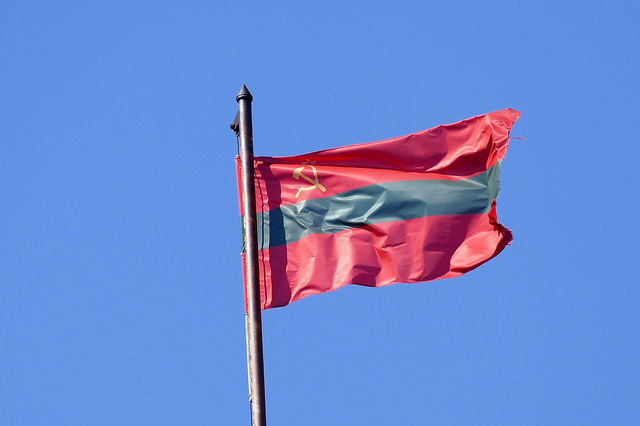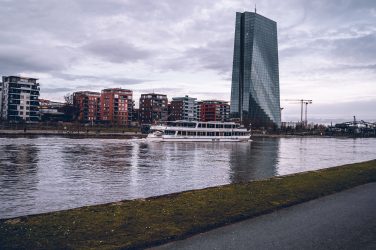In a not so faraway land, a shiny Lenin pedestal is watching over the morsel of land only few have heard of: the self-proclaimed independent state of Transnistria. Transnistria is a sliver of territory crammed between Moldova and Ukraine, two countries which have abounded in pro-Western zeal in recent history. Geographically, that is rather inconvenient for a Transnistrian people who voted (97%) in favour of a potential future integration into Russia in 2006 .
In fact, the river Dniester has become an ideological border between Moldova – which is caught in its transitional Eastern-Western struggle – and Transnistria – which has continued to hold onto its abiding soviet heritage. Technically though, Transnistria is still part of Moldova, however bitter the two camps might feel for one another.
After an extensive civil war in 1992, Transnistria was left with a de facto independence which remains internationally overlooked. The only territories recognizing the breakaway state of Transnistria are other fellow unrecognized “frozen conflict” zones. These scattered relics of the Soviet Union, non-existant for many, form the endearingly titled group, the Commonwealth of Unrecognized States (Transnistria, Nagorno-Karabakh, Abkhazia and South Ossetia).

Transnistria: the longtime object of competing powers
A close look at the historical handling of Transnistria’s territory, from being once part of the Polish-Lithuanian Commonwealth, then of fascist Romania and later on of the Soviet Union, reminds us of how hazardous and relative national borders are – especially when talking about molecular eastern regions at the hands of shifting conglomerates of world powers. Under Nazi Romanian-German occupation, Transnistria became a vivid cemetery, when the region served as a “depository” for deported Jews and Gypsies. More than 400,000 victims were exterminated or simply left to die there during the Second World War. (At times, Romanian authorities would blame their deaths on the poor hygiene of Gypsies, but that is another gloomy story for some other time).
A close look at the historical handling of Transnistria’s territory reminds us of how hazardous and relative national borders are – especially when talking about molecular eastern regions at the hands of shifting conglomerates of world powers.
Today, Transnistria is functioning as a republic – sometimes referred to as “super” presidential – with its own military, government, parliament, police, currency and constitution. The territory remains substantially Eastern-(soviet)-oriented. Besides sporting the hammer and sickle on its flag, Transnistria even celebrates the day of the Bolshevik revolution. Yet, Transnistria has joined, at the beginning of 2016, the Deep and Comprehensive Free Trade Area as part of the agreement between the European Union and Moldova. The thought of an accord was initially frowned upon extensively, but in a last minute change of heart, Transnistrian authorities finally agreed to collaborate with Western countries. Their prolonged initial refusal was based on ideological reasons rather than factual ones: after all, about 40% of Transnistria’s exports go to Europe and only 7,5% to Russia. Even if Transnistria has slightly leaned towards the West recently, this was purely an economic decision (most likely advised/approved by Kremlin). After all, “(feelings towards) Russia can’t be subjected to reasoning”, says my Moldovan friend in regards to the lingering affinity many Transnistrians hold towards Mother Russia.
TRANSNISTRIA: local horizon
Through friends of friends of friends, I got to hear what young people in the region think about their place in the world, castaway in a land of past ambiguities. Anya works for “Civic CLub N°19”, a unique project in Transnistria. This is a platform for alternative education and free expression, which organizes a range of exhibitions, screenings of documentary and art-house cinema, music concerts, debates and literary evenings. Needless to say, the association is not exactly among the favourites of state security organs.
However, Anya stresses out that due to the technological developments of Transnistria, people can choose to live in a modern world, despite the problematic state of media in the country. Mostly in Russian, mainstream media are more often than not pro-Russian rhetoric, lacking a plurality of voice and perspective. The alternative journalistic voices (NGOs, independent journalists) fall short of professionalism and can’t secure the thrust of a reluctant Transnistrian population.
Thanks to the spread of Internet, young people listen to anything from Pink Floyd to Nicolas Jaar, ride skateboards and bikes, and get fashion inspiration from Instagram, recounts Anya. In fact, many seek to pursue education abroad, as diplomas from the Transnistria State University are not recognized outside the country. As speaking English remains quite uncommon for Transnistrians, most popular educational destinations are Odessa, Kishinev and Moscow. While the citizens of Transnistria hold a passport of their own, they can’t really do much with it. Most Transnistrians are backed up by an extra citizenship, which is, in most cases, Russian, Moldovan or Ukrainian.

An alternative cultural space is thus identifiable, despite the confined, conservative context in Transnistria. However, Anya gives me examples of her Transnistrian friends (DJs, designers, artists, photographers) who have moved abroad (Berlin, Zagreb, Minsk) because of the lack of recognition, support and resources in their own country. As she puts it, Transnistria remains a cultural vacuum that less and less people are willing to fill.
Moreover, Transnistria’s economy has been severely fractured, due to ongoing hostilities with Moscow, Russia’s decreasing financial aid and Ukraine’s strict border control. Friend of friend Aliona, 29 and currently unemployed in Transnistria, says she’d be the first one to move to Europe, but emigration dreams are now financially and logistically challenging, if not impossible. Prospects in the country are bleak as unemployment rates are on the rise, despite Transnistria’s strong power sector and metallurgic industrial tradition. Aliona’s village used to be a major agricultural hub for local foods grown on their own plots of land, orchards and greenhouses, exported to the countries part of CIS (Commonwealth of Independent States; Russian Commonwealth). However, Ukraine’s imposed customs regulations on its border with the Transnistrian region have rendered exports problematic, which means that local farmers are forced to limit their production, adapting its size to the local market.
Corruption on different levels (education, healthcare, police) is mentioned by all those interviewed, whether from rural or urban regions of both Transnistria and Moldova. It’s no wild, wild east though – everyone seems to agree that Transistria is a safe place. Politics is often discussed, but at a casual, street-corner level – a social uprising is very unlikely.

Latent prospects, lingering desuetude
Some see the Moldovan-Transnistrian divide as a potential reenactment of the Crimean storyline. After all, there are still 1,500 Russian troops stationed in Transnistria (dubbed as peacekeepers) and a heavy stockpile of weapons, remnants of the Cold War and the Transnistrian War. Others have observed a shift in Russia’s attitude towards Transnistria, arguing that the Kremlin treats the region as a kind of exchange deal for Crimea. If, before the Crimean war, Russia had pumped serious money in Transnistria, it refused to grant an additional 100 million dollars in 2015 to help Transnistria pay for pensions and other social aid. Whether the target of a political statement or the victim of a pragmatic, economically driven decision, Transnistria’s fate is impossible to decipher in a context of continuous geo-political ambiguities.
The country is still caught up in a tight web of conservative views and pro-Russian tendencies, the country’s economic blockade, the absence of international recognition and a developing cultural intelligentsia in transition. It seems that Transinstria, the country that (for many) doesn’t exist, is bound to continue to align its fate with outward egos and international tensions as well as inward reluctance and patriotic nostalgias.
Cover photo: Minamie’s photo (Flickr); Licence: CC BY 2.0






